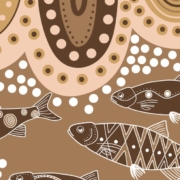Aboriginal Elders say a Change to Marriage Will Damage Ancient Kinship Structures
By: Clare Bruce
An Aboriginal elder says a change to Australia’s marriage law would damage indigenous family structures handed down over millennia.
Ngardarb (pronounced ‘Narr-db’) is a young elder of the Bardi-Jawi people from One Arm Point in far north Western Australia.
She is currently completing a PhD on kinship, and she fears that the bloodlines preserved for generations will be weakened, if Australia moves away from a traditional view of marriage.
The nuclear family structure is “the very fibre of our heritage” in Ngardarb’s view, and marriage “was always male and female”.
“It’s been thousands of years since the kinship marriage structure started,” she said. “It was started with our ancestors…handed down through oral history. We didn’t have all this data that was collected. It was lived experience for thousands of years. So, why should we change it now?
“Our continuity of family connections has been the very foundation of having a mother and a father, a family unit. From that unit, children are linked to their mother’s country, to their father’s country.
“I’ve got strong bloodlines that are connected to country. And that has never been broken, still very strong to this day. But it’s being challenged in what is happening today.”

Family Keeps us Resilient
Family structure has played a big role in helping Aboriginal Australians maintain their identity and resilience, even while they were being dehumanised by white authorities.
“I think of the first contact between white fellas and black fellas,” Ngardarb says. “My grandparents had numbers to their name. They were known by numbers. Up in the Kimberleys especially – particularly around the Broome area – a lot of people were yarded up like flock to do forced labor in the pearling industries. There was a lot of sadness.
“But the old people were resilient. It was the family unit that kept the happiness there.”
It was family connection, too, that kept Ngardarb’s relatives strong when they tragically became part of the Stolen Generations. Her aunty was ripped from family by authorities as a four-year-old, and her grandmother was traumatised watching her sister and cousins being taken away “like rag dolls”. Invisible family bonds helped them to maintain some sense of identity during their years of separation.
The Voice of Remote Australia
Ngardarb believes some indigenous ‘yes’ campaigners in cities don’t have the same understanding of kinship that many remote and regional people do.
“I’ve heard a lot of voices that have been really coming from urban Australia,” she said. “It’s all been towards the ‘yes’. I’m not putting anyone down, but I feel that there’s some people that really have not experienced a full force of the kinship structure, no fault of theirs.”
While she and other elders have been afraid of speaking out because of potential backlash, Ngardarb decided she couldn’t remain silent.
“I’ve been scared to even say stuff because of what’s been happening…but sometimes you just need to have your say,” she said. “I am a young elder and I know my place in my community and my tribe and my clan group. I want to see that part of our culture continue on to the future.
“We don’t want to ostracize our same sex marriage people. We’re not there to criticize them. We just want to hold onto the values that have been passed down, hold on to our kinship structures.”
A Mix of Indigenous Views

Above: Aboriginal elders present the Uluru Bark Petition at Parliament House in Canberra. Image: Ulurubarkpetition.com
The views of Australia’s indigenous community around the marriage debate have been mixed.
At the ‘No’ end are many elders, like those behind the ‘Uluru Bark Petition’ delivered to Canberra’s Parliament House in 2015. They call traditional heterosexual marriage a ‘sacred union’. Their petition says it is “an affront to the Aboriginal People of Australia to suggest another definition of marriage”.
But at the other end of the spectrum are Aboriginal same-sex marriage supporters including LGBTI indigenous—like writer Dameyon Boyson. He argues that the Uluru Bark Petition misrepresents Aboriginal culture, and that it’s only the voice of a few leaders excessively influenced by white man’s religion and influence.
“Behind these authentic faces that you see holding up these pieces of bark and standing in front of Parliament House you will find the mechanics of white influence,” he wrote in 2015.
Yet ‘No’ vote supporters, like petition organiser Pastor Peter Walker, say traditional Aboriginal values are in fact quite Christian in their nature. “This is a cultural initiative, it is not a Christian initiative,” Pastor Walker has said. “But you can align the two — we have the same values and agree with having traditional marriage.”
A Lack of Consultation—As Usual
The Commonwealth has a long history of disenfranchising Australia’s First Peoples, and Ngardarb says the marriage debate has been yet another example.
“The government’s always made mistakes with us,” she said. “We’re still trying to fix a lot of the problems that were done from way back. They’re not making it any easier by not really talking to the Aboriginal people, talking to our elders.”
Ngardarb wishes there were more opportunity in the marriage debate for indigenous voices of all kinds to be heard: “There needs to be more Aboriginal people coming out from both sides.”
To add to the injustice of the debate, only half of all Indigenous Australians are on the electoral roll, and some expect only a quarter to even participate in the vote.
Gay indigenous writer Ricky Macourt points out that in remote Indigenous communities, it can take hours to even get to the closest mail box.
“How can the country expect Indigenous Australians, LGBTIQ or not, to engage in a system that fundamentally disadvantages them and raises barriers to participation?” he writes.





Leave a Reply
Want to join the discussion?Feel free to contribute!